The Xiaomi Mi Note Pro and Mi Note Review
by Joshua Ho on September 11, 2015 9:00 AM ESTDisplay
For those that are well-versed in smartphones, it probably goes without saying why display quality is important. However, for those that don’t spend their lives reading about these issues, it is not necessarily all that obvious what makes a great display. It also won’t necessarily be obvious whether display quality really matters after a certain extent. As we’ll soon see, it turns out that there are a number of factors that influence display quality that won’t be on any normal specification list. There are some obvious metrics to look at like maximum brightness and static contrast, but something like color reproduction is often intensely personal. What looks great to some people might be excessively neon to others. What looks realistic and natural to some might be dull and dead to others.
In order to try and bring some level of objectivity to these issues, we rely on an external professional equipment (spectrophotometer and colorimeter) to quantify our display observations. For our spectrophotometer and colorimeter, we’ve standardized on X-Rite’s i1Pro2 and i1DisplayPro respectively. In order to effectively use this hardware, we also use SpectraCal’s CalMAN 5 with a custom workflow to record data and present it in a useful manner. To try and make our color observations somewhat objective we’ve elected to test color reproduction against the sRGB gamut, which is the standard for all web content and color in general, along with a gamma curve of power 2.2.
Mi Note
Mi Note Pro
In the case of the Xiaomi Mi Note and Mi Note Pro, we see two different kinds of displays from the same vendor. For the Mi Note, a JDI 1080p LCD is used while for the Mi Note Pro we see a JDI FBC20 1440p LCD. Both have a full RGB stripe, so it’s important to keep in mind that an AMOLED display of the same resolution will often have less perceived resolution due to the difference in subpixel arrangement. Subjectively, the resolution difference here is surprisingly small between the two, but I suspect that this is because the Mi Note Pro has a rather obvious ITO grid that can affect display clarity.
Color shifting with respect to viewing angles with both is subjectively relatively low, but there are some problems with contrast decreases/uneven luminance shifts that happen when you rotate the display at a constant viewing angle with something other than pure black on the display. I would say that I can probably count on one hand the number of LCD-equipped phones that don’t exhibit this problem though like the HTC One M9+, iPhone 6, and the LG G4.
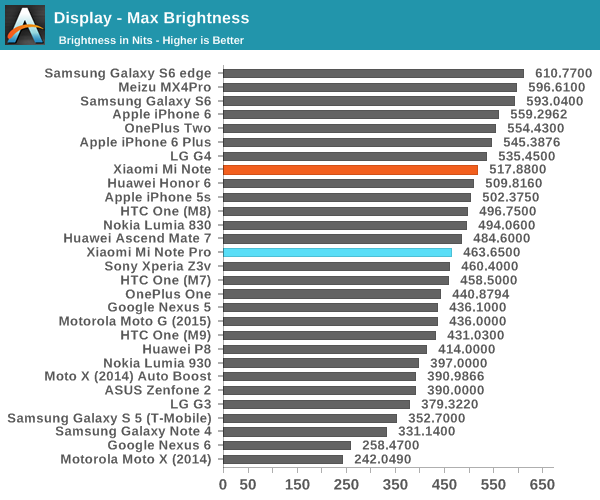
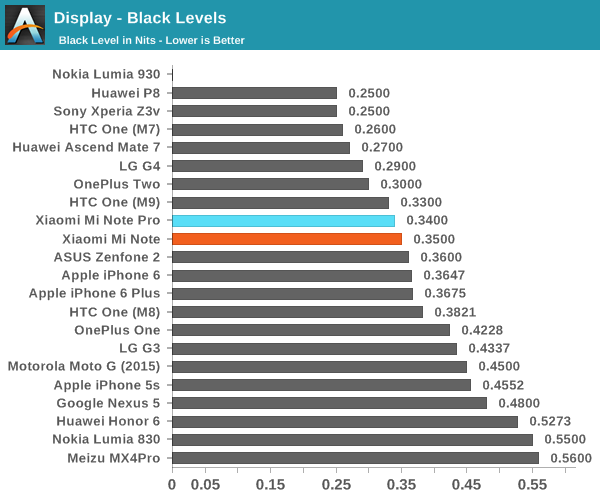
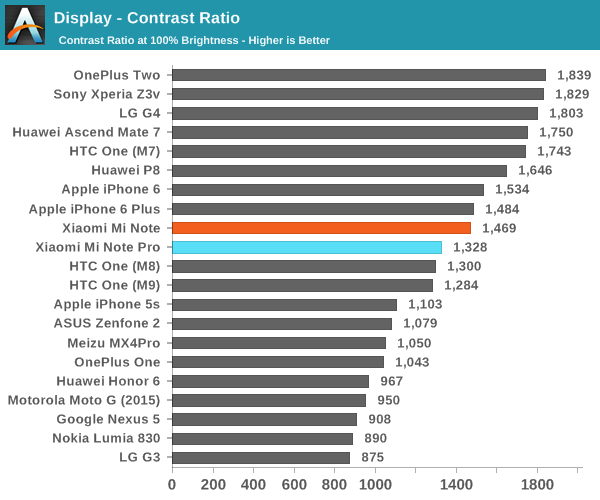
Moving on past some subjective observations, we can take a look at display luminance and contrast, which generally is a strong determinant for outdoor visibility in most cases as reflectance tends to be mostly similar amongst smartphones today. In this test, we can clearly see a difference between the two displays as the 1440p display does end up dimmer with reduced contrast. However, due to the sunlight display feature of the Mi Note Pro in practice I actually found it to have a similar, if not better outdoor visibility when compared against the Mi Note.
For those that are unfamiliar with what Xiaomi’s Sunlight Display feature is, this effectively an implementation of Apical’s Assertive Display technology. This technology is a form of content-adaptive backlight control in which the gamma and some other characteristics of the displayed image are altered in order to increase the visibility of darker aspects of the display, while retaining apparent contrast within the image so it doesn’t look washed out. For those that don’t care about the technology behind it, all that needs to be said is that it absolutely works, and it works incredibly well at improving sunlight visibility.
Mi Note
Mi Note Pro
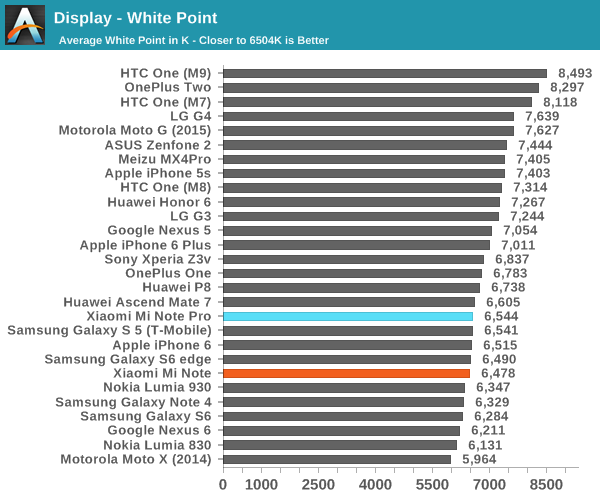
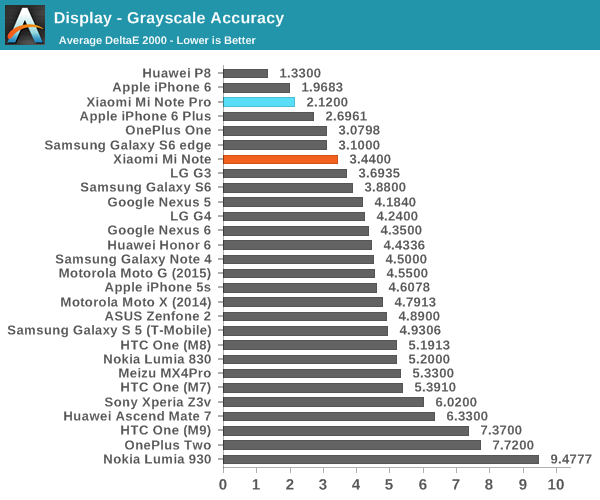
In our grayscale test, the Mi Note and Mi Note Pro were both set to standard contrast, but the Mi Note also required an extra adjustment to the “cool” color temperature as the “neutral” and “warm” were both extremely warm/red. After doing these changes, you can see just how well calibrated the Mi Note and Mi Note Pro are in grayscale. The Mi Note isn’t quite perfectly consistent, but the extra money you pay for the Mi Note Pro seems to have gone into turning good into great. In both cases, it’s interesting to note that the gamma curve is such that gamma is reduced near black, but raised near white, likely done to improve contrast in the near-white region.
Mi Note
Mi Note Pro
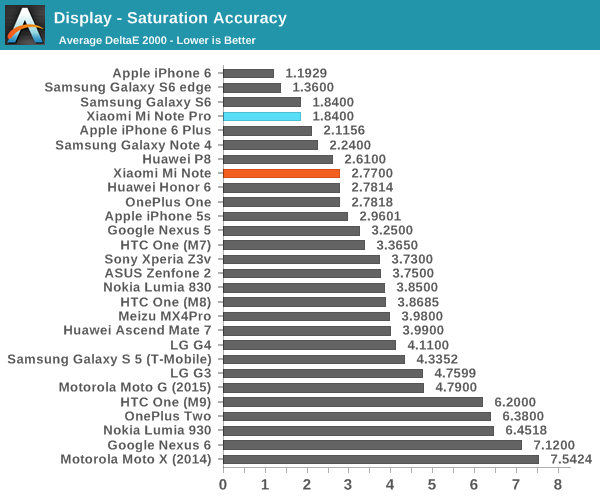
Moving on to the saturation/gamut test, both are fully capable of adhering to sRGB gamut. The Mi Note does have some strangeness going on with the gamut control, but overall calibration is acceptable as average error ends up below 3. The extra money that you pay for the Mi Note Pro at least partially goes into calibration, as the Mi Note Pro has incredibly well-calibrated saturation sweeps in this test, and follows the sRGB gamut very closely.
Mi Note
Mi Note Pro
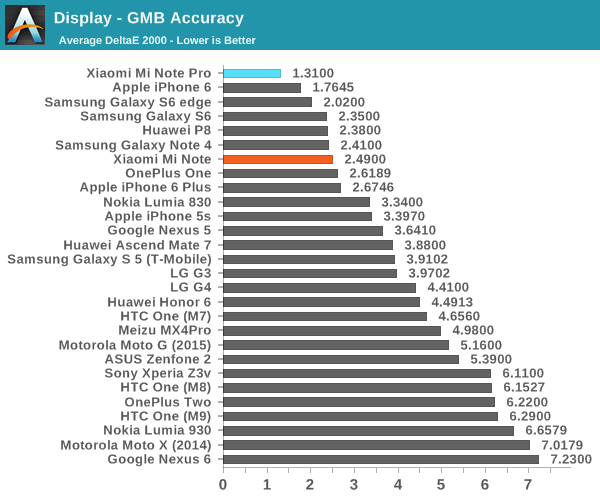
In the ColorChecker test, we see a similar pattern. The Mi Note delivers acceptable color calibration across the board with good hue accuracy, but the Mi Note Pro reaches almost absurd levels of calibration accuracy. There’s really not a lot of reason to improve color calibration past the point that Xiaomi has reached here, which is surprising when a number of OEMs continue to avoid proper sRGB calibrations. The Mi Note Pro is arguably better here relative to the Mi Note, as you get a higher resolution and better color calibration, but the difference in resolution and color calibration could be considered to be relatively minor. Both phablets have great displays with no real reservations.


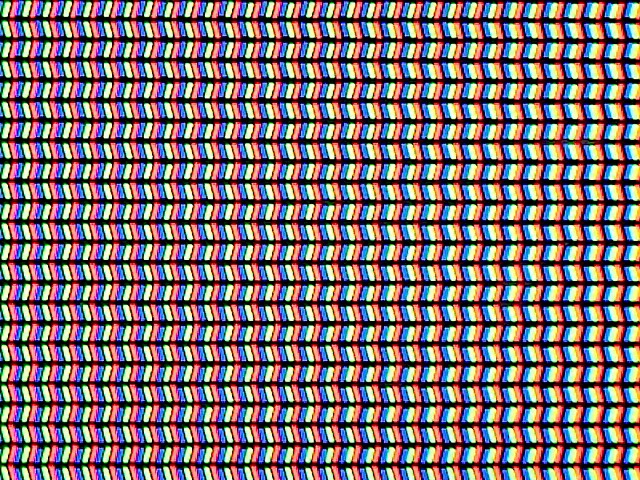

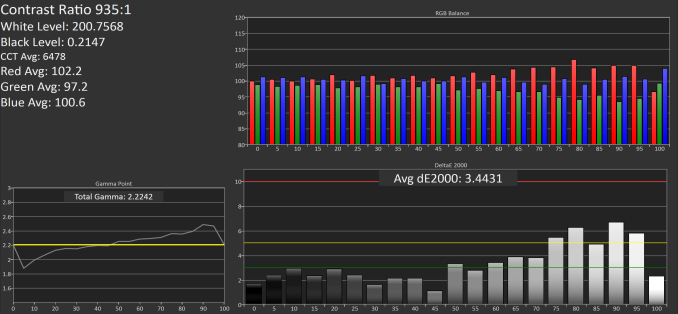

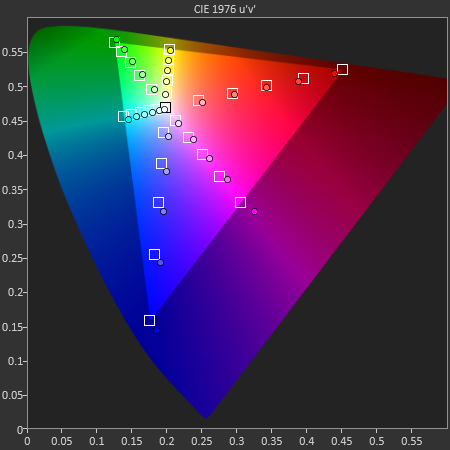
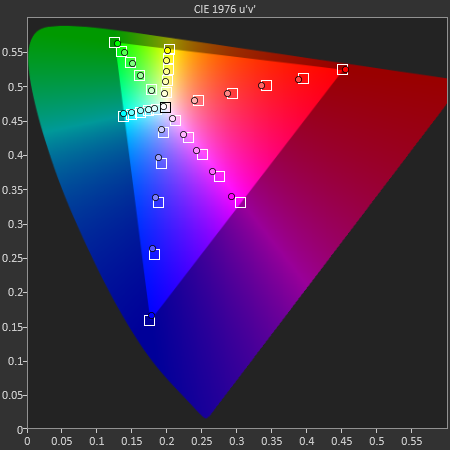
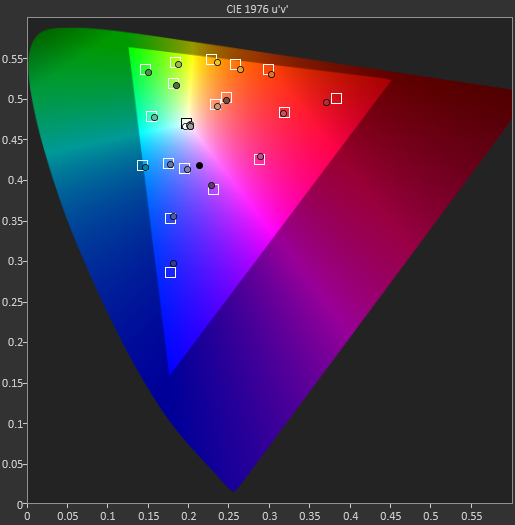
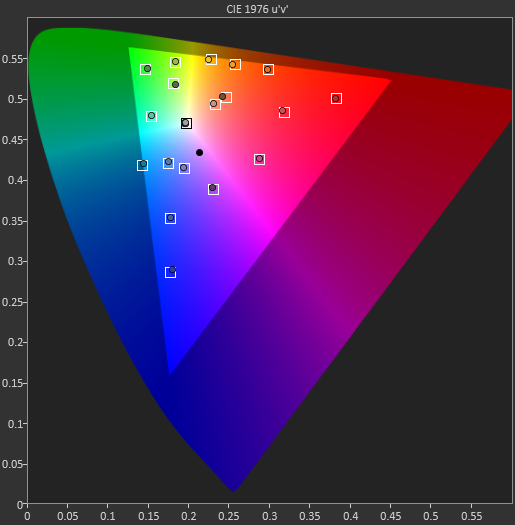








94 Comments
View All Comments
AussieinUS - Monday, September 14, 2015 - link
FYI my Note works in the USA and Canada with my US T-Mobile account. No LTE but HSPA and 3G. The same speeds that I got in Italy where it was purchased. The Bands in the Note is missing for LTE at least in the version I have. I think 1700. Also the slowness to update from Kitkat is a limitation. Overall a great phone and well priced.johnny_boy - Saturday, September 12, 2015 - link
Android 4.4 KitKat? Really? I wouldn't even consider the Note because of this. I have the Honor 6 and it's taking ages for them to bring their first OS update ever to the phone: apparently we got Lollipop late this month, around the time Marshmallow comes out! Definitely the last phone I buy from Huawei.realbabilu - Tuesday, September 15, 2015 - link
don't worry. They re updating the firmware fast. you can choose nightly every week update.I have oneplus that came with Lollipop CM12s still has the 3 stagefreight bugs, Xiaomi miui patched them fast with kitkat firmware.
The Lollipop Cm12s Oneplus is killing batteries faster than Kitkat Cm11s
vision33r - Sunday, September 13, 2015 - link
Note 5 and S6 Edge Plus reviews are everywhere. I've checked them out and they are super fast, I've never used an Android device that smooth and fast before. I definitely think those are the phones to beat in 2015. However I don't want them because like the iPhone 6 they are due to get refreshed next year when Samsung can finally figure out how to get microSD working. I can do without battery swap but I need ext storage.Yaru - Sunday, October 4, 2015 - link
I doubt Samsung will bring back MicroSD storage. They're targeting the high end premium market with those phones and they rather charge you extra money for extra internal storage like Apple does.NXTwoThou - Tuesday, September 15, 2015 - link
*crosses fingers that WM10 will be available for it or its successor*JimmiG - Wednesday, September 16, 2015 - link
Part of the difference in battery life can also be explained by Android 5.0 vs 4.4.4, since KitKat has superior battery life over Lollipop.hasseb64 - Monday, September 21, 2015 - link
Chinese hardware and STASI software, your personal info is SOLD at least two times...ntgeralt - Wednesday, September 23, 2015 - link
Tell you someting you don't know:In permissions management system, It will automatically scan all your files background and "tell" you how much crash you need to clean.And XiaoMi UI will give you ads push everyweek,you can't find anyplace to turn it off.
The last thing is google it: "XiaoMi backdoor".
pintin - Wednesday, September 30, 2015 - link
Yes.An important reason for the unexpected success of the company Xiaomi were designed both hardware and firmware that runs on the open source software of Android. Xiaomi MIUI interface of speed and design equivalent to the operating system of the iPhone or the Samsung's high-end products but with only half the price. Most Android phone vendors are dependent on similar designs by the third party manufacturers like Foxconn provide.